Report: Exploring Antecedents and Outcomes of Org. Commitment
VerifiedAdded on 2023/06/03
|13
|768
|147
Report
AI Summary
This report delves into the antecedents of organizational commitment, exploring factors that influence an employee's psychological attachment to their organization. It examines demographic factors like age, cultural influences, career advancement opportunities, job satisfaction levels, and the impact of job insecurity. The report highlights the benefits of organizational commitment, including talent retention, effective decision-making, and reduced employee turnover. It analyzes each antecedent, providing insights into their effects on employee motivation and organizational performance. Furthermore, it emphasizes the importance of strategic interventions by business organizations to boost commitment and mitigate potential issues. The outcomes of organizational commitment, such as high motivation, skill utilization, and improved decision-making, are also discussed, supported by references to relevant research.
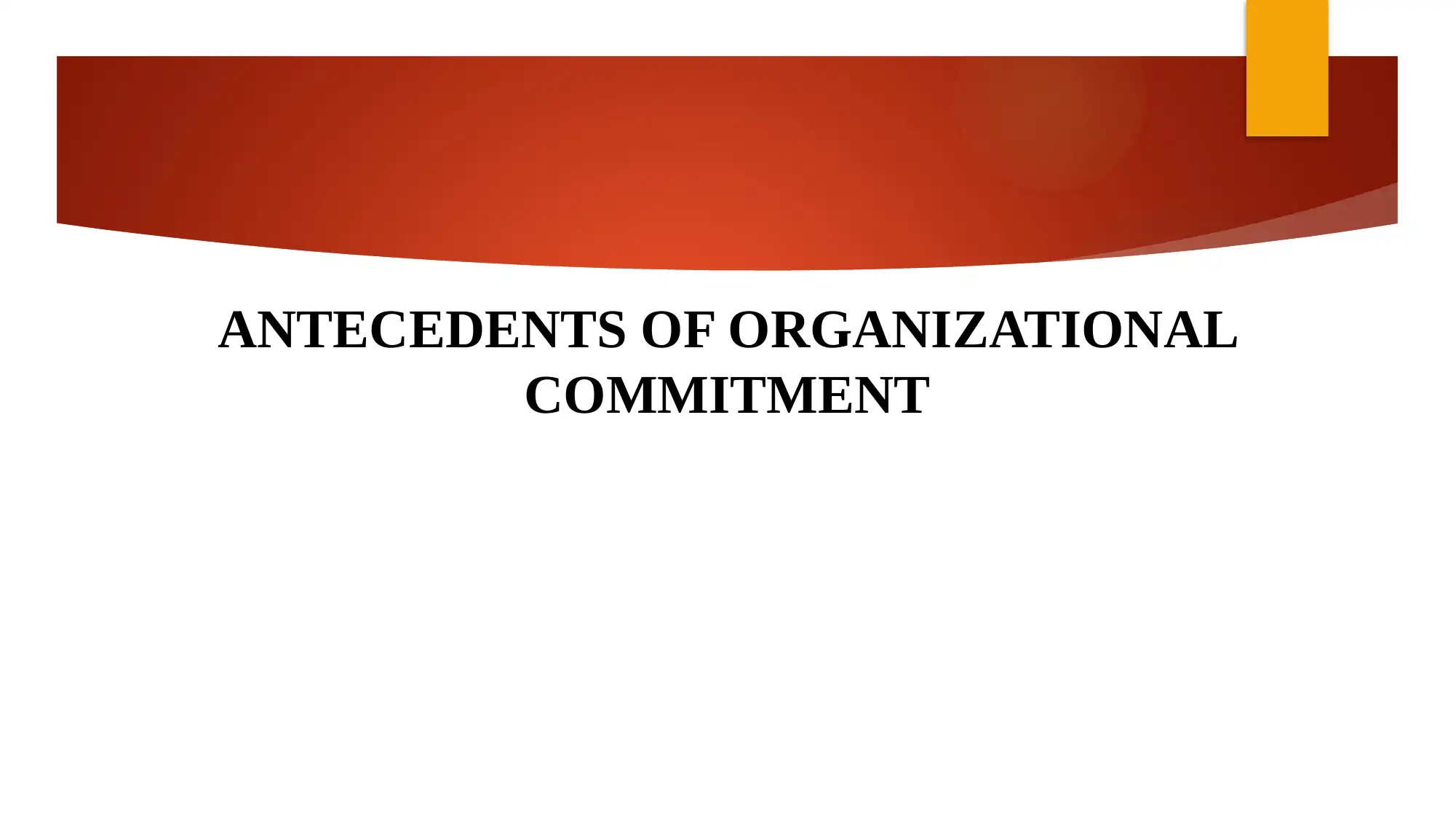
ANTECEDENTS OF ORGANIZATIONAL
COMMITMENT
COMMITMENT
Paraphrase This Document
Need a fresh take? Get an instant paraphrase of this document with our AI Paraphraser
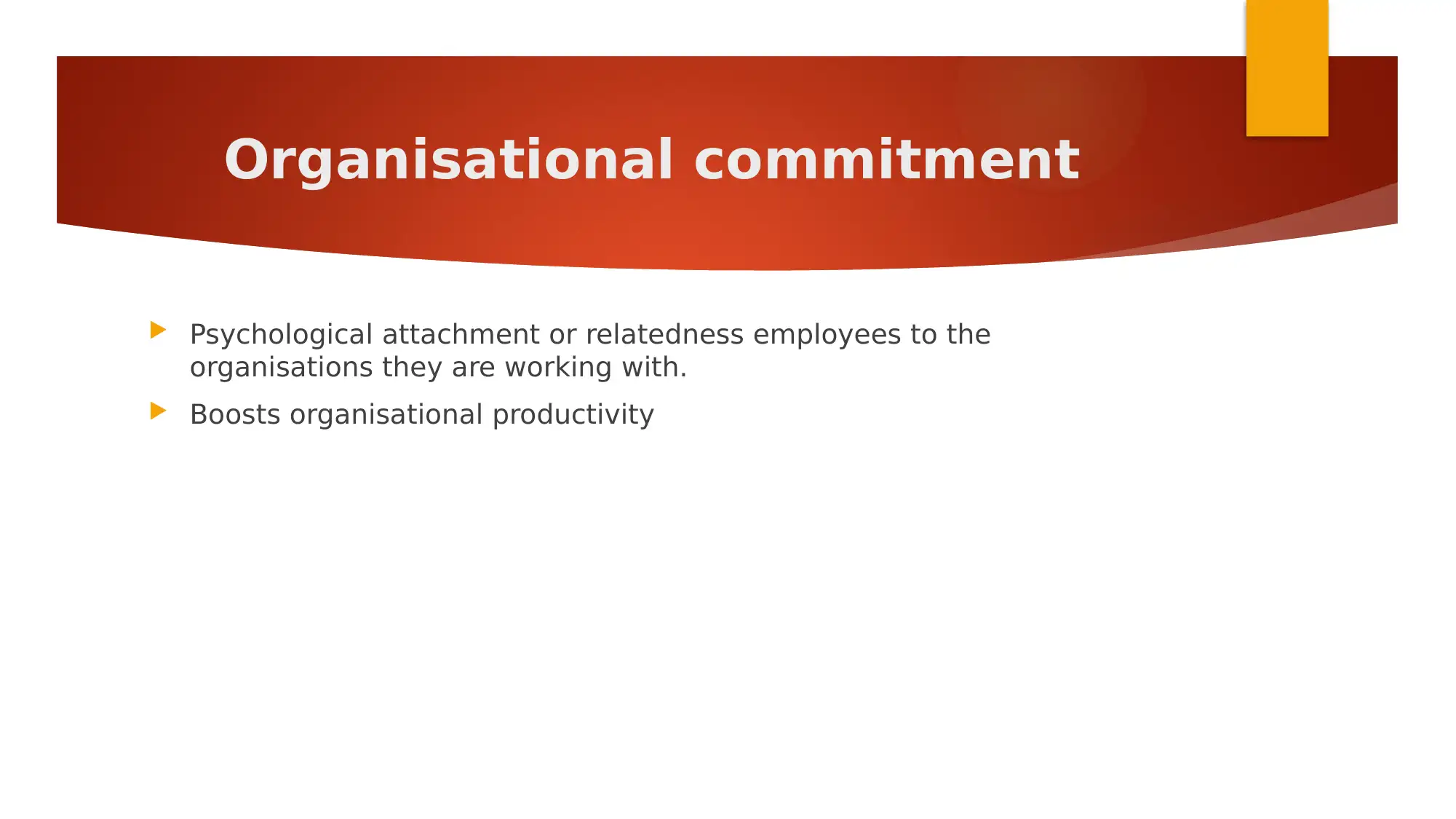
Organisational commitment
Psychological attachment or relatedness employees to the
organisations they are working with.
Boosts organisational productivity
Psychological attachment or relatedness employees to the
organisations they are working with.
Boosts organisational productivity
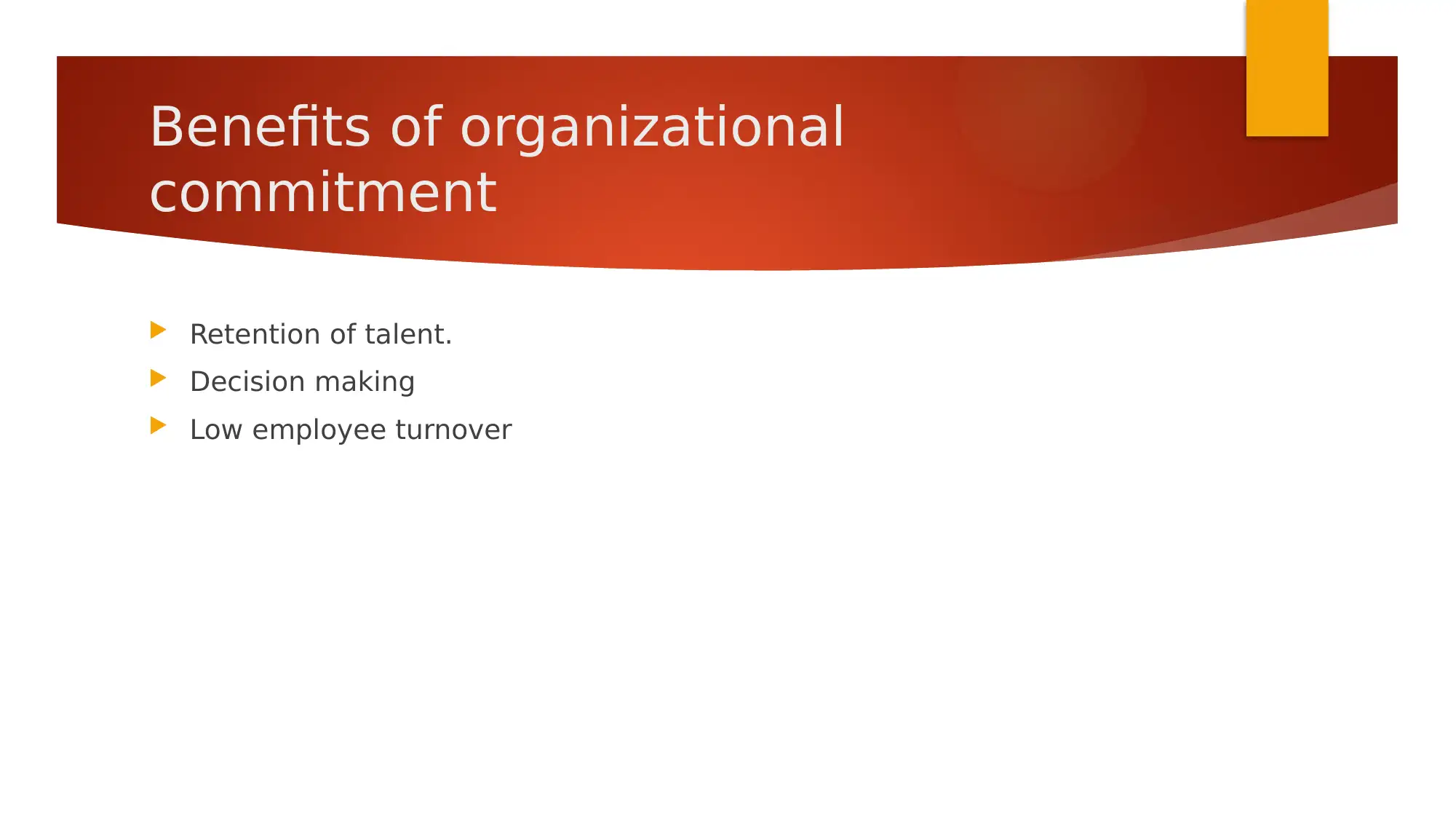
Benefits of organizational
commitment
Retention of talent.
Decision making
Low employee turnover
commitment
Retention of talent.
Decision making
Low employee turnover
⊘ This is a preview!⊘
Do you want full access?
Subscribe today to unlock all pages.

Trusted by 1+ million students worldwide
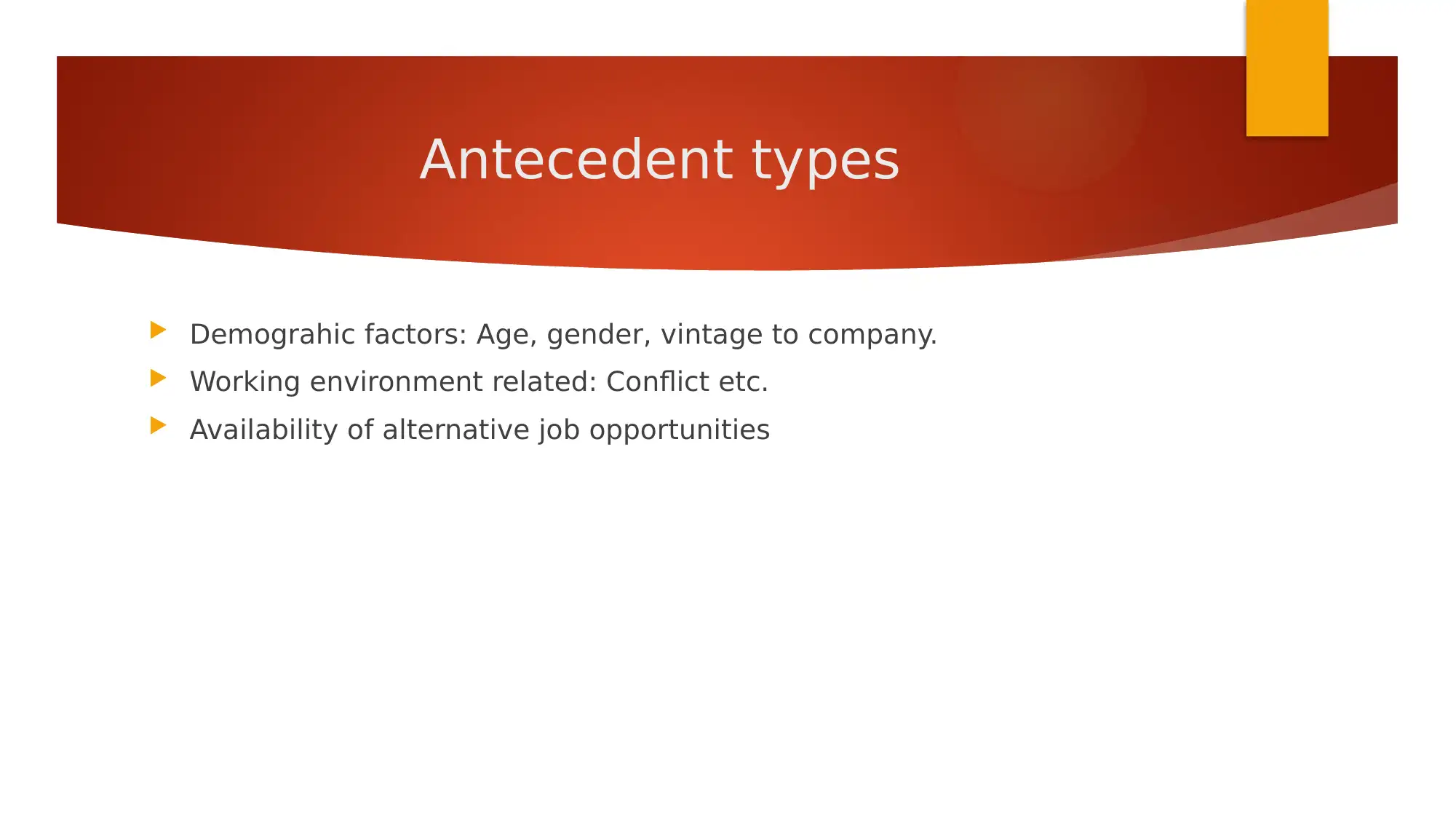
Antecedent types
Demograhic factors: Age, gender, vintage to company.
Working environment related: Conflict etc.
Availability of alternative job opportunities
Demograhic factors: Age, gender, vintage to company.
Working environment related: Conflict etc.
Availability of alternative job opportunities
Paraphrase This Document
Need a fresh take? Get an instant paraphrase of this document with our AI Paraphraser
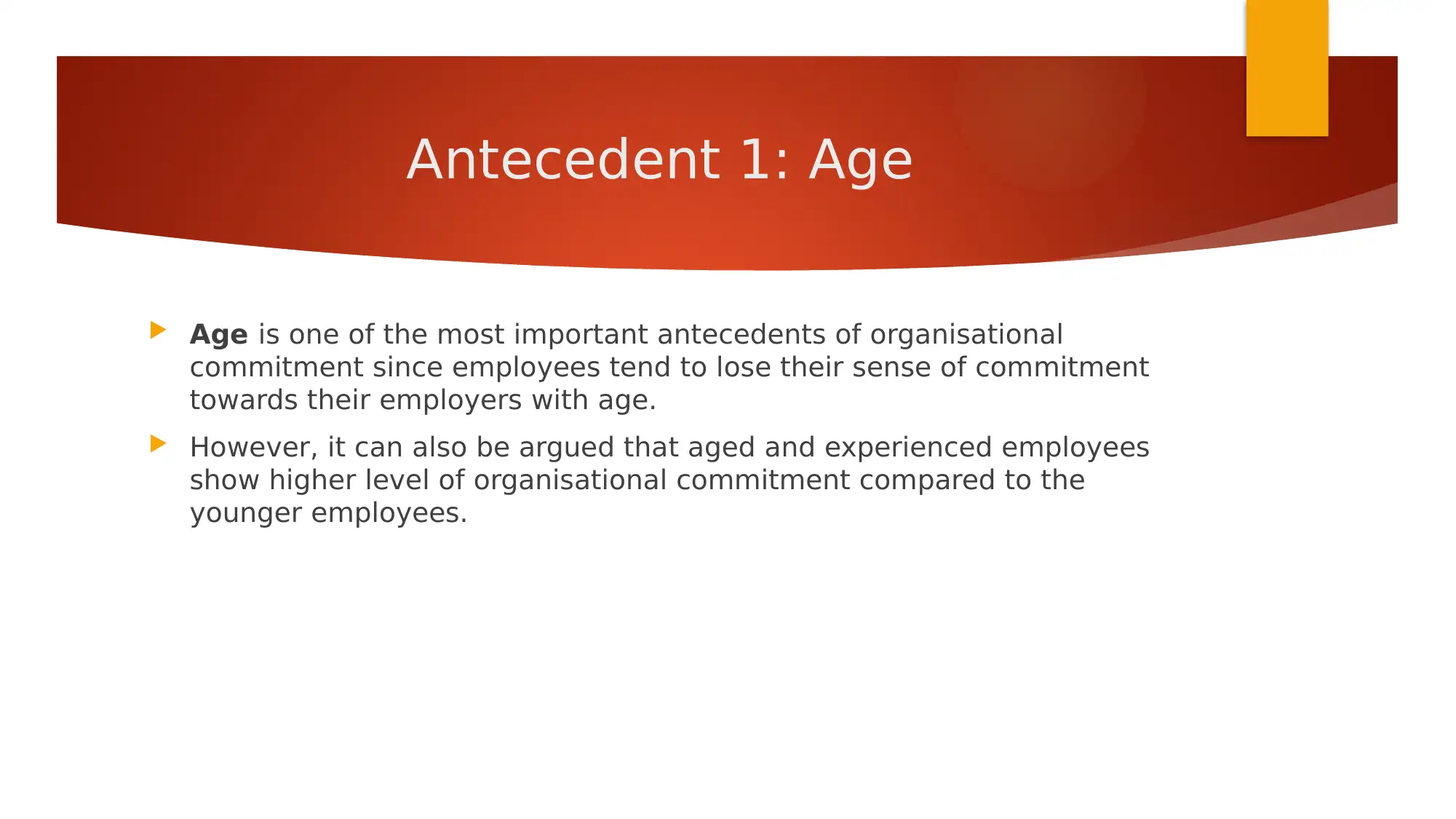
Antecedent 1: Age
Age is one of the most important antecedents of organisational
commitment since employees tend to lose their sense of commitment
towards their employers with age.
However, it can also be argued that aged and experienced employees
show higher level of organisational commitment compared to the
younger employees.
Age is one of the most important antecedents of organisational
commitment since employees tend to lose their sense of commitment
towards their employers with age.
However, it can also be argued that aged and experienced employees
show higher level of organisational commitment compared to the
younger employees.
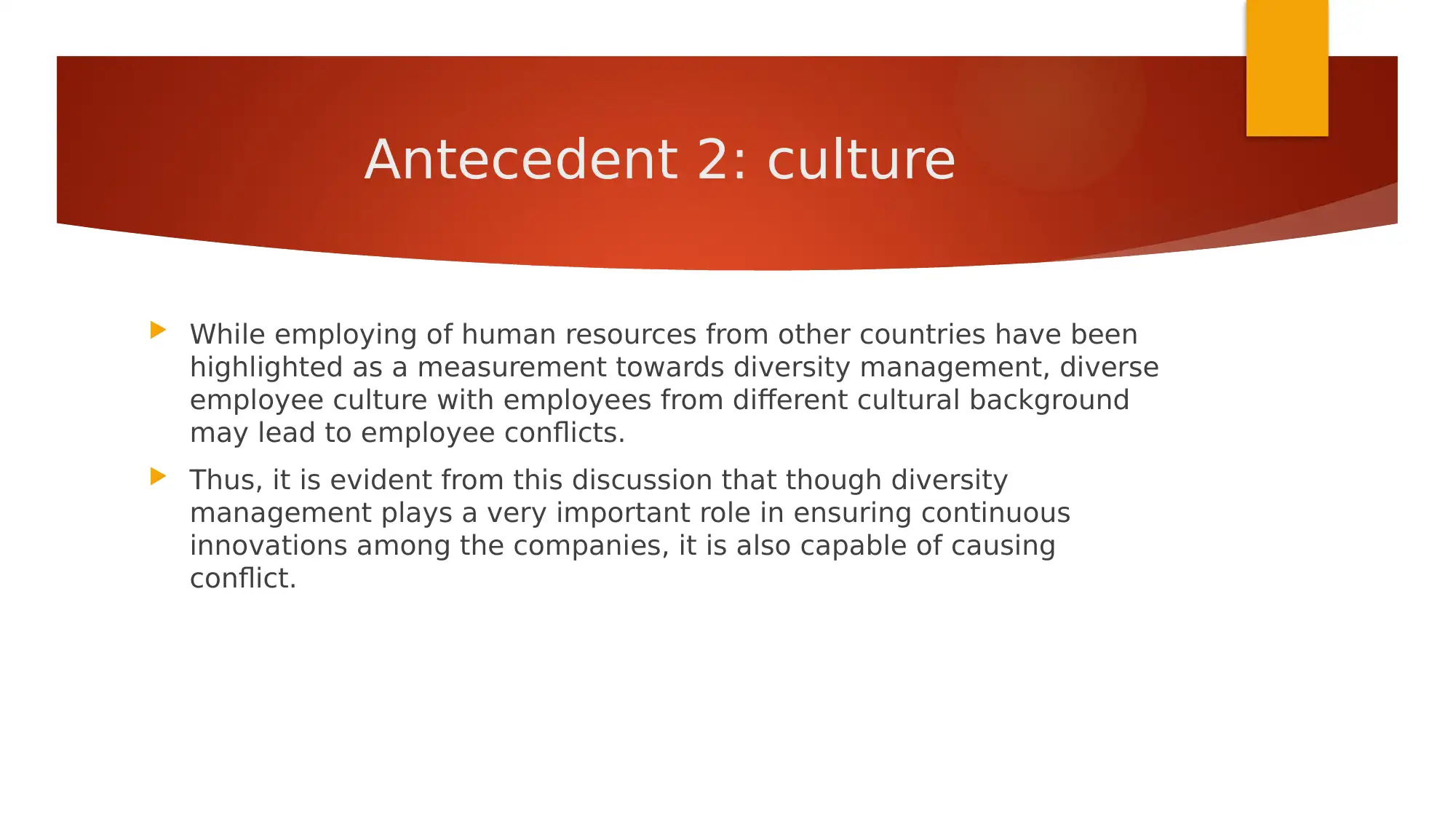
Antecedent 2: culture
While employing of human resources from other countries have been
highlighted as a measurement towards diversity management, diverse
employee culture with employees from different cultural background
may lead to employee conflicts.
Thus, it is evident from this discussion that though diversity
management plays a very important role in ensuring continuous
innovations among the companies, it is also capable of causing
conflict.
While employing of human resources from other countries have been
highlighted as a measurement towards diversity management, diverse
employee culture with employees from different cultural background
may lead to employee conflicts.
Thus, it is evident from this discussion that though diversity
management plays a very important role in ensuring continuous
innovations among the companies, it is also capable of causing
conflict.
⊘ This is a preview!⊘
Do you want full access?
Subscribe today to unlock all pages.

Trusted by 1+ million students worldwide
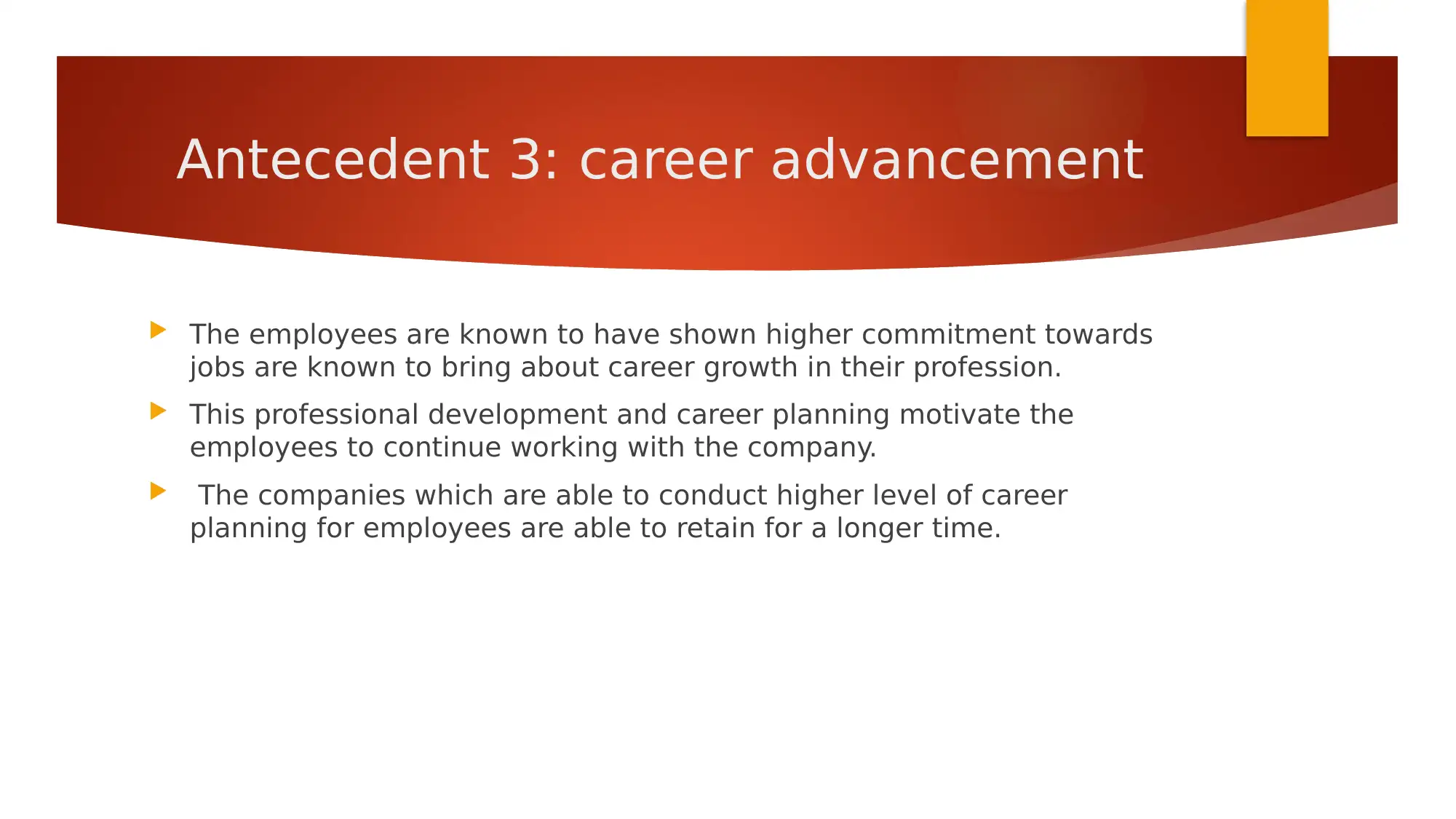
Antecedent 3: career advancement
The employees are known to have shown higher commitment towards
jobs are known to bring about career growth in their profession.
This professional development and career planning motivate the
employees to continue working with the company.
The companies which are able to conduct higher level of career
planning for employees are able to retain for a longer time.
The employees are known to have shown higher commitment towards
jobs are known to bring about career growth in their profession.
This professional development and career planning motivate the
employees to continue working with the company.
The companies which are able to conduct higher level of career
planning for employees are able to retain for a longer time.
Paraphrase This Document
Need a fresh take? Get an instant paraphrase of this document with our AI Paraphraser
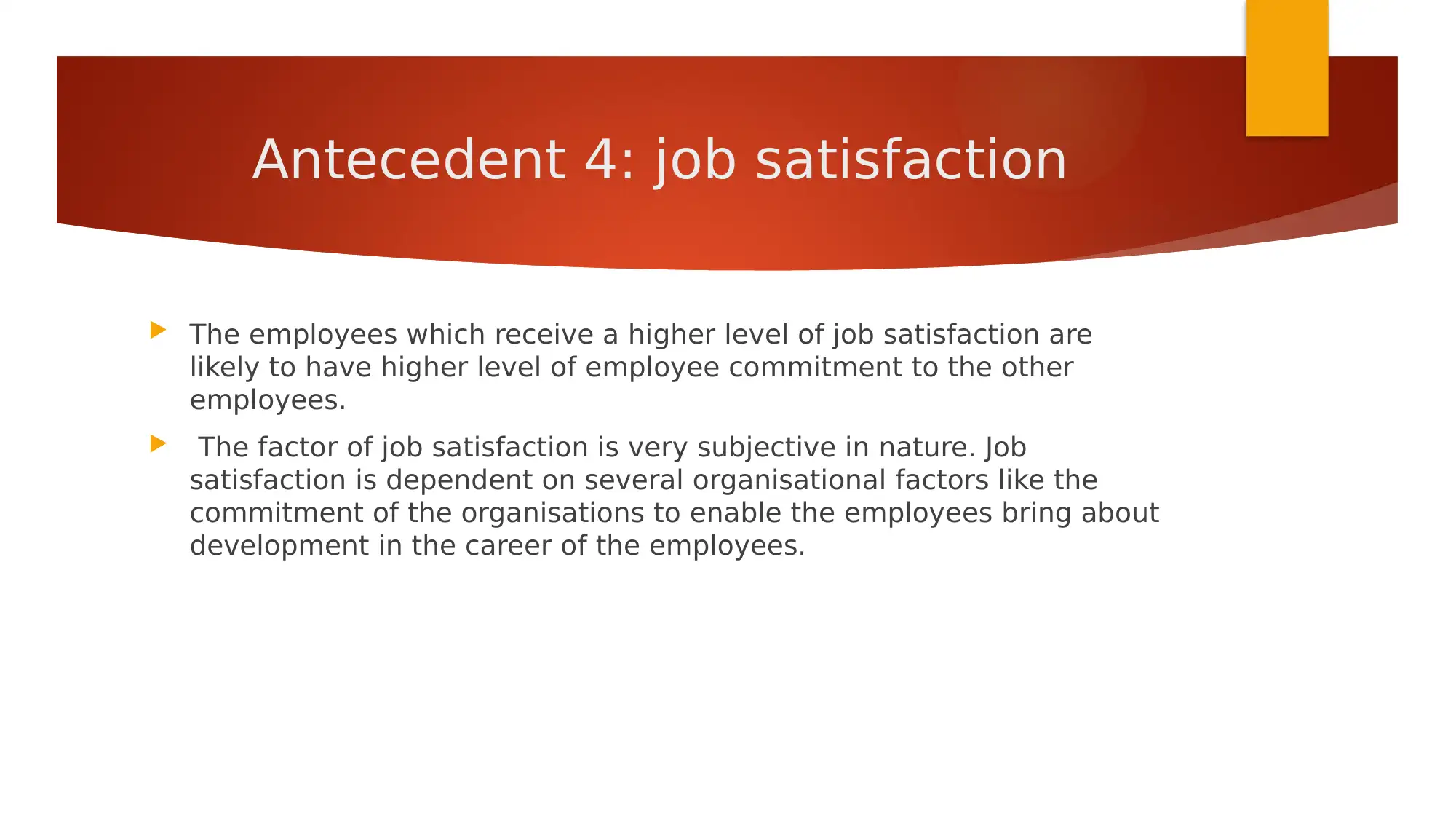
Antecedent 4: job satisfaction
The employees which receive a higher level of job satisfaction are
likely to have higher level of employee commitment to the other
employees.
The factor of job satisfaction is very subjective in nature. Job
satisfaction is dependent on several organisational factors like the
commitment of the organisations to enable the employees bring about
development in the career of the employees.
The employees which receive a higher level of job satisfaction are
likely to have higher level of employee commitment to the other
employees.
The factor of job satisfaction is very subjective in nature. Job
satisfaction is dependent on several organisational factors like the
commitment of the organisations to enable the employees bring about
development in the career of the employees.
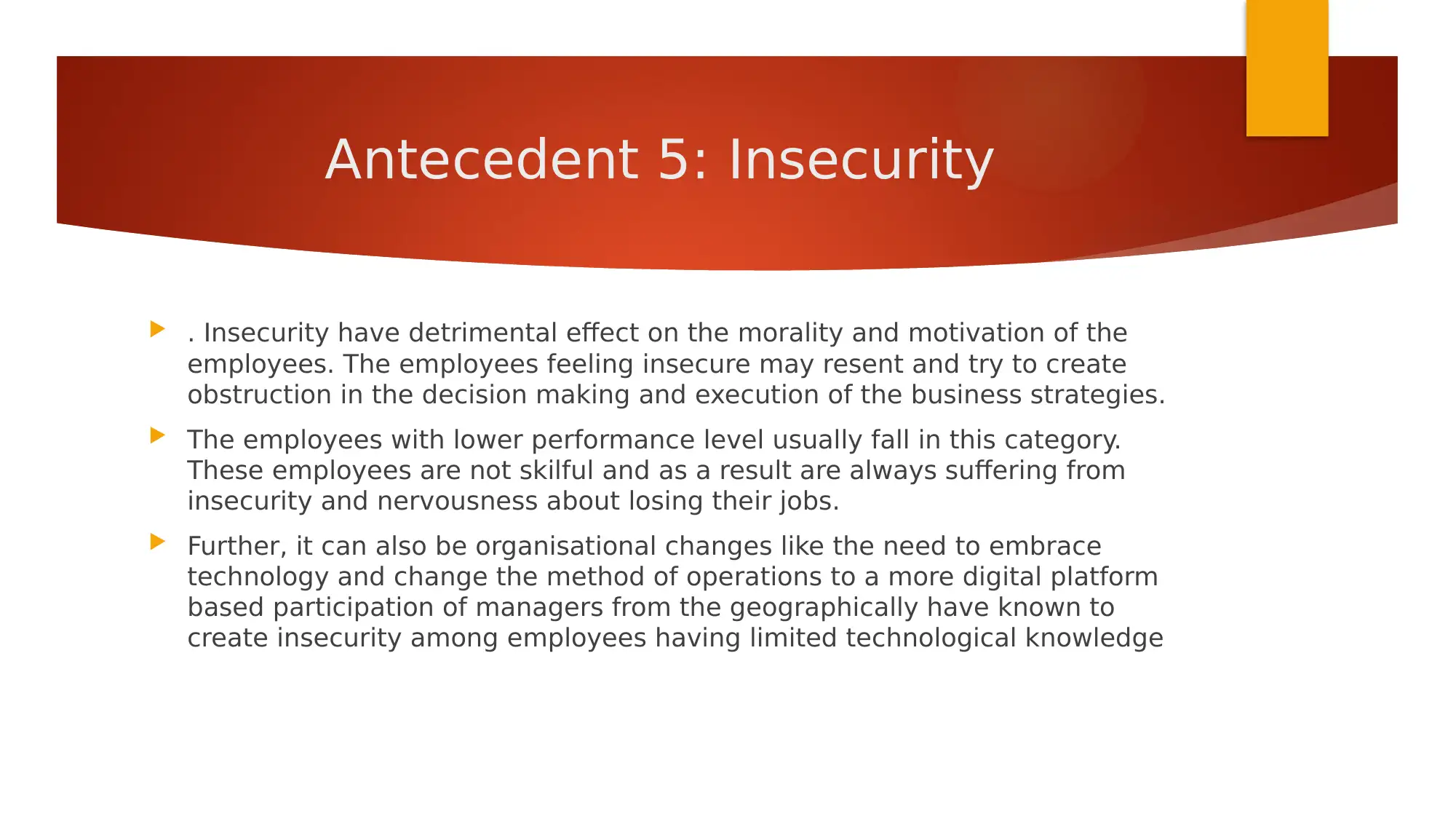
Antecedent 5: Insecurity
. Insecurity have detrimental effect on the morality and motivation of the
employees. The employees feeling insecure may resent and try to create
obstruction in the decision making and execution of the business strategies.
The employees with lower performance level usually fall in this category.
These employees are not skilful and as a result are always suffering from
insecurity and nervousness about losing their jobs.
Further, it can also be organisational changes like the need to embrace
technology and change the method of operations to a more digital platform
based participation of managers from the geographically have known to
create insecurity among employees having limited technological knowledge
. Insecurity have detrimental effect on the morality and motivation of the
employees. The employees feeling insecure may resent and try to create
obstruction in the decision making and execution of the business strategies.
The employees with lower performance level usually fall in this category.
These employees are not skilful and as a result are always suffering from
insecurity and nervousness about losing their jobs.
Further, it can also be organisational changes like the need to embrace
technology and change the method of operations to a more digital platform
based participation of managers from the geographically have known to
create insecurity among employees having limited technological knowledge
⊘ This is a preview!⊘
Do you want full access?
Subscribe today to unlock all pages.

Trusted by 1+ million students worldwide
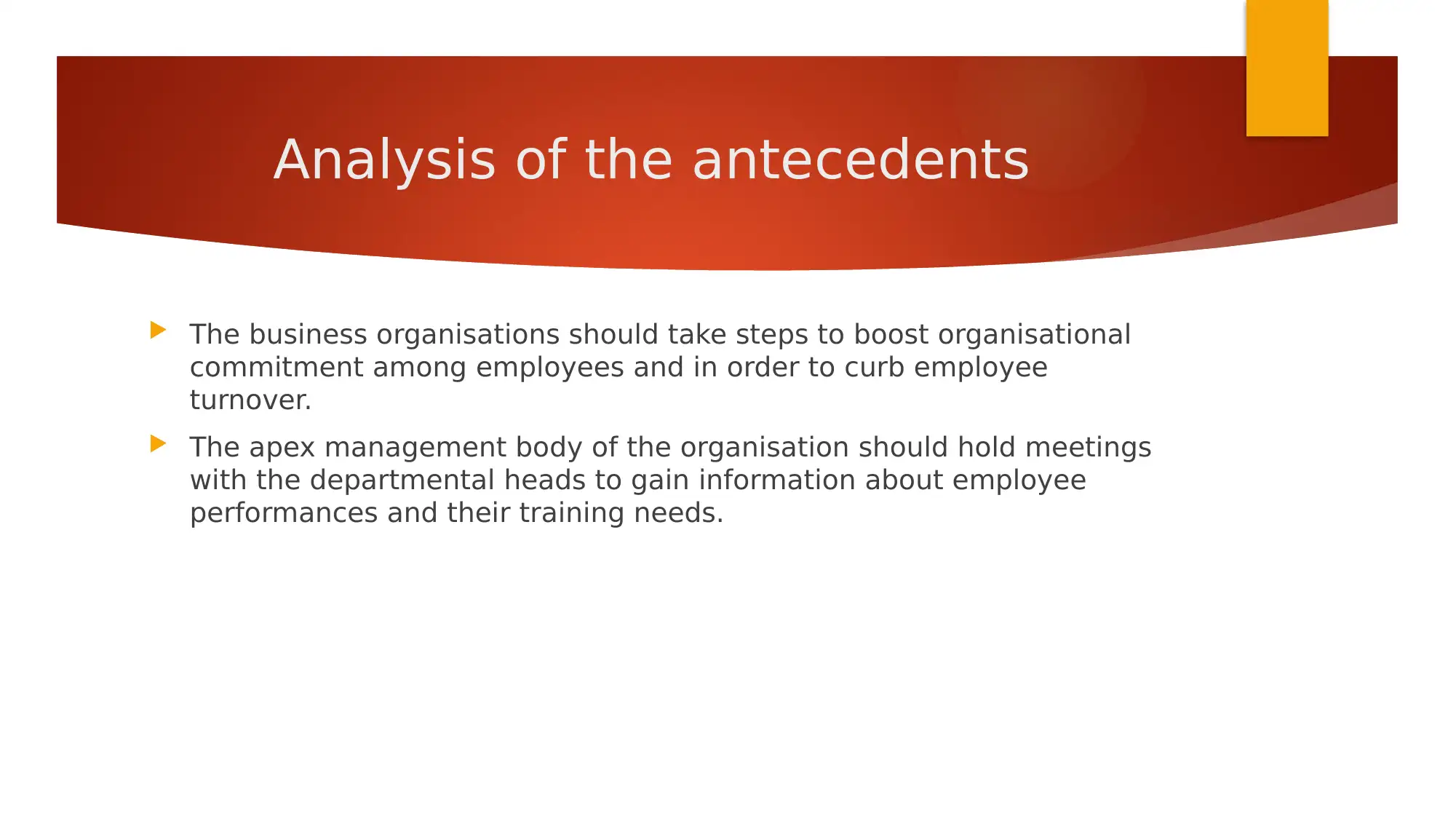
Analysis of the antecedents
The business organisations should take steps to boost organisational
commitment among employees and in order to curb employee
turnover.
The apex management body of the organisation should hold meetings
with the departmental heads to gain information about employee
performances and their training needs.
The business organisations should take steps to boost organisational
commitment among employees and in order to curb employee
turnover.
The apex management body of the organisation should hold meetings
with the departmental heads to gain information about employee
performances and their training needs.
Paraphrase This Document
Need a fresh take? Get an instant paraphrase of this document with our AI Paraphraser
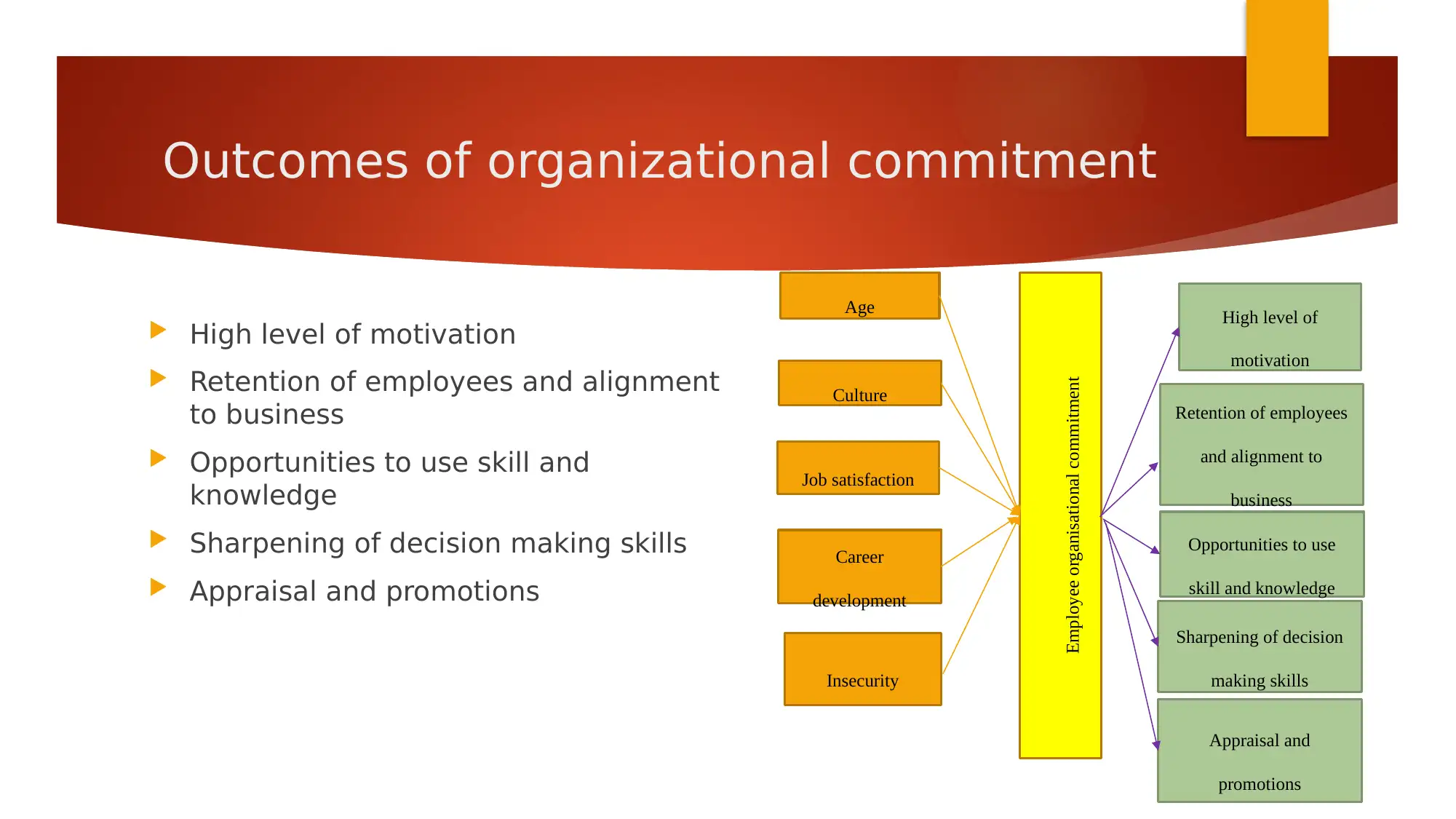
Outcomes of organizational commitment
High level of motivation
Retention of employees and alignment
to business
Opportunities to use skill and
knowledge
Sharpening of decision making skills
Appraisal and promotions
Employee organisational commitment
Age
Culture
Job satisfaction
Career
development
Insecurity
High level of
motivation
Retention of employees
and alignment to
business
Opportunities to use
skill and knowledge
Sharpening of decision
making skills
Appraisal and
promotions
High level of motivation
Retention of employees and alignment
to business
Opportunities to use skill and
knowledge
Sharpening of decision making skills
Appraisal and promotions
Employee organisational commitment
Age
Culture
Job satisfaction
Career
development
Insecurity
High level of
motivation
Retention of employees
and alignment to
business
Opportunities to use
skill and knowledge
Sharpening of decision
making skills
Appraisal and
promotions
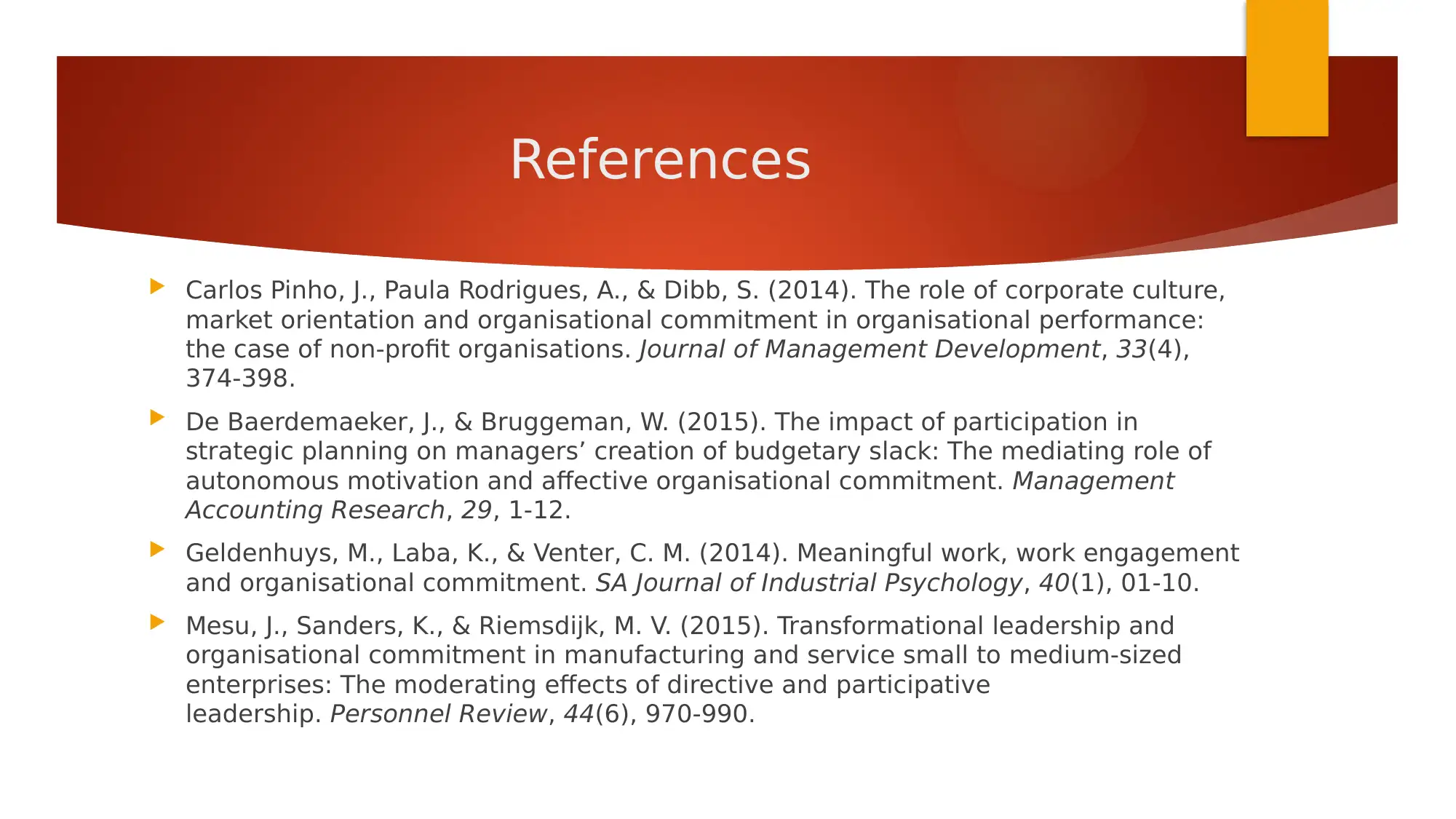
References
Carlos Pinho, J., Paula Rodrigues, A., & Dibb, S. (2014). The role of corporate culture,
market orientation and organisational commitment in organisational performance:
the case of non-profit organisations. Journal of Management Development, 33(4),
374-398.
De Baerdemaeker, J., & Bruggeman, W. (2015). The impact of participation in
strategic planning on managers’ creation of budgetary slack: The mediating role of
autonomous motivation and affective organisational commitment. Management
Accounting Research, 29, 1-12.
Geldenhuys, M., Laba, K., & Venter, C. M. (2014). Meaningful work, work engagement
and organisational commitment. SA Journal of Industrial Psychology, 40(1), 01-10.
Mesu, J., Sanders, K., & Riemsdijk, M. V. (2015). Transformational leadership and
organisational commitment in manufacturing and service small to medium-sized
enterprises: The moderating effects of directive and participative
leadership. Personnel Review, 44(6), 970-990.
Carlos Pinho, J., Paula Rodrigues, A., & Dibb, S. (2014). The role of corporate culture,
market orientation and organisational commitment in organisational performance:
the case of non-profit organisations. Journal of Management Development, 33(4),
374-398.
De Baerdemaeker, J., & Bruggeman, W. (2015). The impact of participation in
strategic planning on managers’ creation of budgetary slack: The mediating role of
autonomous motivation and affective organisational commitment. Management
Accounting Research, 29, 1-12.
Geldenhuys, M., Laba, K., & Venter, C. M. (2014). Meaningful work, work engagement
and organisational commitment. SA Journal of Industrial Psychology, 40(1), 01-10.
Mesu, J., Sanders, K., & Riemsdijk, M. V. (2015). Transformational leadership and
organisational commitment in manufacturing and service small to medium-sized
enterprises: The moderating effects of directive and participative
leadership. Personnel Review, 44(6), 970-990.
⊘ This is a preview!⊘
Do you want full access?
Subscribe today to unlock all pages.

Trusted by 1+ million students worldwide
1 out of 13
Related Documents
Your All-in-One AI-Powered Toolkit for Academic Success.
+13062052269
info@desklib.com
Available 24*7 on WhatsApp / Email
![[object Object]](/_next/static/media/star-bottom.7253800d.svg)
Unlock your academic potential
Copyright © 2020–2025 A2Z Services. All Rights Reserved. Developed and managed by ZUCOL.



